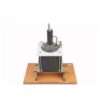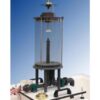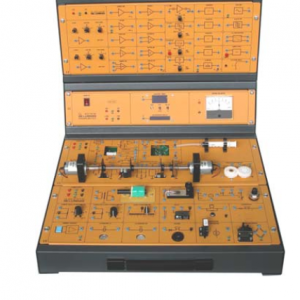DEVICE INCLUDES THE SENSOR / TRANSDUCER INTO THE FOLLOWS:
Linear sliding potentiometer, rotating potentiometer, servo potentiometer, Wheatstone bridge circuit, NTC thermistor, platinum RTD sensor, IC temperature sensor, thermocouple, phototransistor, PIN photodiode, photocell, cell photoelectric, LVDT, extended transducer, linear position sensor, air flow sensor, air pressure sensor, humidity sensor, optoelectronic sensor, optical reflective sensor, sensor application, Hall effect sensor, tacho generator, microphone.
The following output sensors / transducers:
Resistor, incandescent lamp, horn, portable coil speaker, ultrasonic generator, ultrasonic receiver, dc electromagnetic, dc relay, dc motor.
AND THE FOLLOWING REGULATOR COMPONENTS:
Timer / counter, bar graph, dc voltmeter, dc amplifier, ac amplifier, power amplifier, current amplifier, buffer amplifier, reverse amplifier, differential amplifier, V / F converter, F / V converter, I / V converter, V / I converter, complete wave rectifier, delay converter comparator, generator Alarm oscillator, electronic switch set, oscillator, filter, low-pass filter, power supply, amplifier, integrated with switchable time constant, amplifier set device, sample and hold circuit, gain control and compensation compensation.















